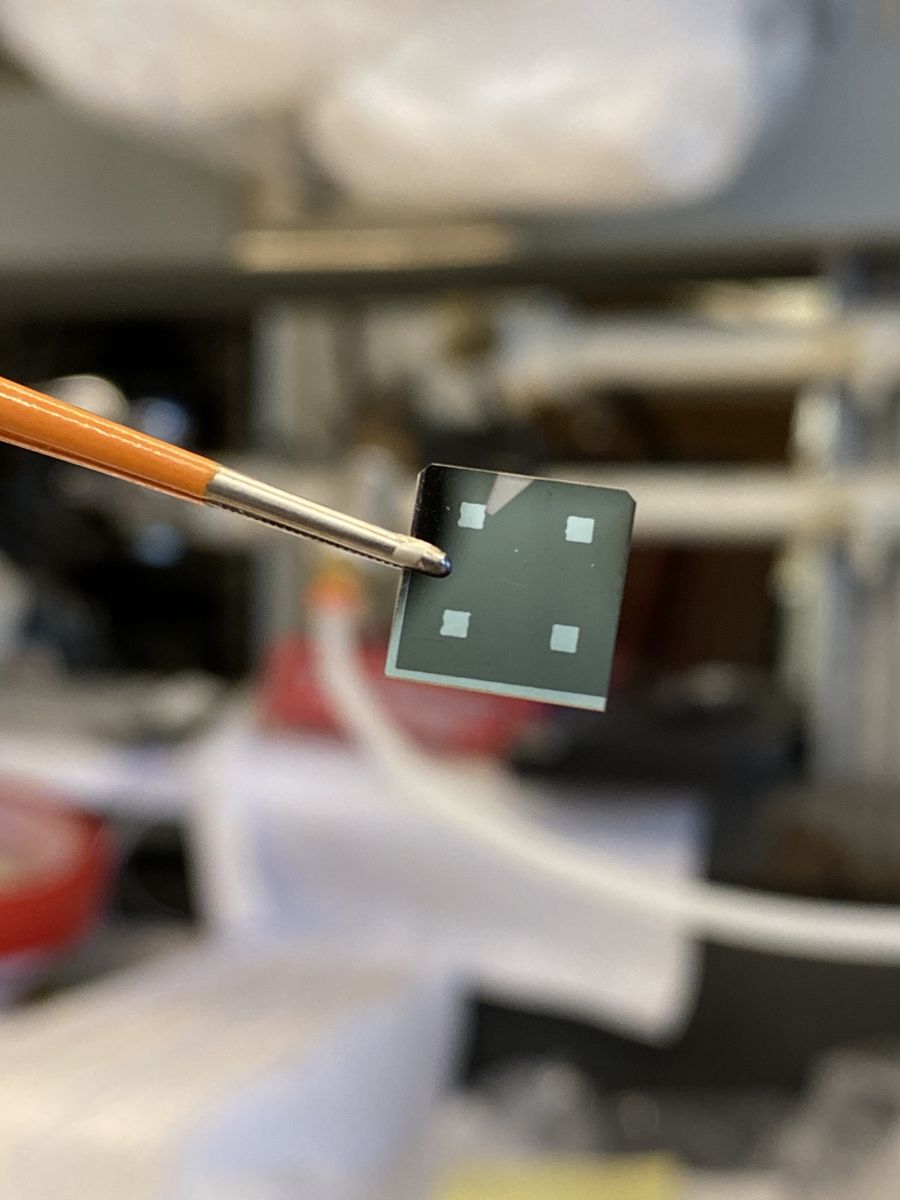Using crystal materials to improve electronic devices and artificial intelligence
Certain types of rare earth materials can be manipulated to either conduct or resist electricity, a trait that could make it easier to manufacture electronics or even emulate nerve cells, according to research from an international team of scientists using the CLS.
By Michael RobinPurdue researchers, Shriram Ramanathan and Zhen Zhang (right), in the lab. Photo credit: Erin Easterling, Purdue University.
Rutgers University physicist Michele Kotiuga and her colleagues studied perovskites without oxygen ions in its structure. Such defects are common in perovskites, crystal materials that are widely used in applications from catalysts to electronics and solar cells. The perovskites the team looked at are rare earth nickelates.

“Typically, oxygen vacancies will make a material more conductive,” Kotiuga said. “In this work, we present an example where oxygen vacancies make the material more insulating.”
Oxygen vacancies typically result in travelling electrons that facilitate the flow of current and make the material conductive. The researchers found that with some nickelates, the lack of oxygen ions could help slow or stop the flow of current.
“Based on the number of oxygen vacancies and their distribution, the resistivity changes,” Kotiuga said. “We can manipulate the resistance by one, removing some oxygen and two, applying an electric field to redistribute them. If the vacancies have accumulated at one side of the device, they can be more effective in blocking the flow of current.”
These properties open up interesting possibilities for these rare earth perovskites. For example, oxygen defects in many devices leads to conductivity where it shouldn’t be, shorting out the device. Consequently, manufacturers must go to considerable time and expense to fabricate and optimize their processes to prevent this.
“Using materials where these defects do not lead to conducting states that render the device inoperable would simplify the whole production process,” she said.
Another possibility offered by the “tunable resistance” of materials like these nickelates is in the field of artificial intelligence. Zhen Zhang from Purdue University’s School of Materials Engineering explained how these materials might be used to mimic nerve cells.
“The key feature of synaptic activity in the brain is that the weight of a synapse that connects neurons can be tuned during the learning process,” he said. “The resistance modulation thus can be used in the circuit to mimic the functionality of a synapse.”
In other words, researchers may be able to use these crystals to not only improve electronics, but to mimic the way our brains learn.
Additionally, the same materials that these researchers analyzed could potentially hide objects from infrared cameras. Click here to learn more about this application.
The team examined the materials using tools at the CLS and the Advanced Photon Source in Illinois and included collaborators from the Massachusetts Institute of Technology and Purdue University.
The team’s research is published as “Carrier localization in perovskite nickelates from oxygen vacancies” in the Proceedings of the National Academy of Sciences (PNAS).
Kotiuga, Michele, Zhen Zhang, Jiarui Li, Fanny Rodolakis, Hua Zhou, Ronny Sutarto, Feizhou He et al. "Carrier localization in perovskite nickelates from oxygen vacancies." Proceedings of the National Academy of Sciences 116, no. 44 (2019): 21992-21997. DOI:10.1073/pnas.1910490116.
For more information, contact:
Victoria Schramm
Communications Coordinator
Canadian Light Source
306-657-3516
victoria.schramm@lightsource.ca
